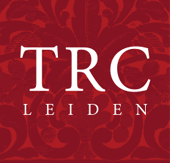Wearing the dress of a different gender, called ‘drag’, has long been a form of entertainment. Drag has been associated with LGBTQ+ communities for an equally long time. “Drag is playing with gender. It can be a satire on gender, it can be a mocking,” says the Amsterdam-based Richard Keldoulis. “When I’m in drag I let myself show my feminine side.” For the last fifteen years he has been performing as drag queen Jennifer Hopelezz. He notes that, while most drag is done by gay men, there are heterosexual male drag queens, and “drag kings (lesbians), lady queens (heterosexual women), and I know at least one trans woman who does drag king—which breaks every boundary.”
Wearing a different gender’s clothes “still surprises and shocks people,” he says. “You literally take on another identity. You begin to wonder why is this me or not me? Some people know me only as Jennifer, others only as Richard. When you’re dressed as non-gender conforming, they react totally differently. People grab you and show you off, which doesn’t happen when I’m not in drag. ” Reactions to his wearing drag range from enjoyment (mostly, he notes, from women and children) to anger or disgust (usually from men).
“That’s the power of drag, because it does bring up all these emotions. You start thinking about how you unconsciously treat genders differently. Gender is something you never think about,” he says, yet it affects all we do and are, the way we look, talk, sit and walk, even the way we move our hands. “Everything goes through a gender filter. I catch myself with my nephews and nieces, saying how pretty you look or how strong you are. We are so strict in what a girl can do and what a boy can do. Drag definitely makes you extremely aware about gender.”

Remembering Stonewall was part of Amsterdam Pride’s 2019 celebration, Keldoulis said, noting the theme was “Remember the Past, Create the Future.” “We do have a lot to celebrate,” he said. “We’ve come a long way in the past few years, in terms of marriage equality and more. There’s been huge progress. But these things come and go in waves. I expect that there will always be a fight and a backlash.”
He is well aware of the discrimination LGBTQ+ people face. In 2018, going home after giving a speech at Gay Pride in Amsterdam, a taxi driver refused to let him in his cab. “Three other queens and two men in leather were also refused rides. For me drag is something I can take on and off but if you’re transgender or wearing fetish clothes, there’s a lot of discrimination.”
Jennifer Hopelezz’s costumes come from second hand shops, and off the rack, but are also custom made for her. The black teddy body suit in the TRC collection, with applied silver covered sequins in a motif of stylized flowers (TRC 2019.1621; see illustration on top), was designed for Hopelezz by Spanish drag queen Lola Veneno (aka Sergio Pedrero Santos), while the turquoise net garment (TRC 2019.1622; see illustration above), with hand applied leaves and sequins, was made by Keldoulis’s husband, Elard Diekman.

